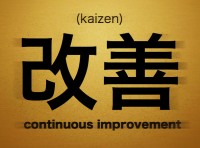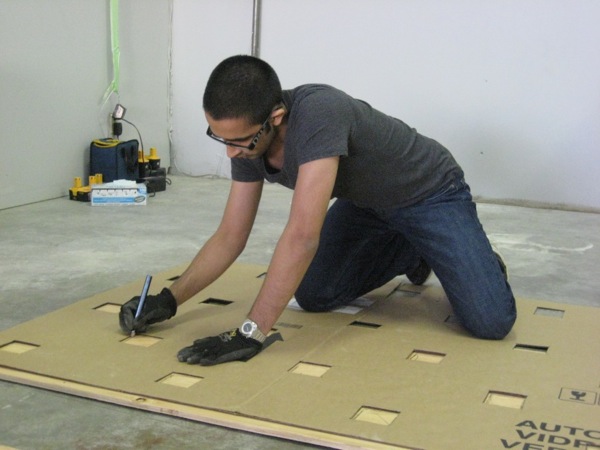The Benefits of an Accountability Buddy
I’ve always found that having a friend or colleague who is working toward similar goals is helpful when it comes to achieving your own goals. Often referred to as an “accountability buddy” in success circles, they can have a specifically defined relationship with you, or they could just be along for the ride providing general support. However the relationship is defined (or not defined), the idea is that your accountability buddy helps you stay motivated in your training. Each relationship is specific to the people involved in the partnership, but the benefits, for the most part are the same. Here are 4 that I have found in my experience: (more…)
How to Minimize the Psychological Impact of Injuries in Martial Arts Classes
 Injuries happen in the martial arts. It’s not stamp collecting. They’re bound to happen sooner or later. At our dojo, we’ve been very fortunate in that we’ve had very few injuries occur in the 6 years we’ve been in operation. But when they do happen, it’s important to minimize their psychological effects in the dojo.
Injuries happen in the martial arts. It’s not stamp collecting. They’re bound to happen sooner or later. At our dojo, we’ve been very fortunate in that we’ve had very few injuries occur in the 6 years we’ve been in operation. But when they do happen, it’s important to minimize their psychological effects in the dojo.
When a person gets injured it serves as a reminder that what we do has its risks, and this “reminder” can act as a virus that spreads negativity and doubt throughout the class and to those who witness the event. Students become more cautious in their performance of techniques, and this “cautiousness” can cause them to move in ways that actually lead to the very injuries they fear. (more…)
6 Reasons Why You Shouldn’t Force It in Martial Arts Training
 In Jiu-jitsu, as in many martial arts, the goal is to develop great technique so as to use one’s energy with the greatest level of efficiency for maximum effect. Jiu-jitsu literally translates to mean “the art of pliancy or flexibility.” When students get stuck on a technique though, sometimes they will try to use power to force it to work. This not a good approach if your goal is to become a better martial artist. Water is often used as analogy of how we should train in the martial arts. It finds the path of least resistance and flows around its obstacles. Bruce Lee himself said: “Be like water making its way through cracks. Do not be assertive, but adjust to the object, and you shall find a way round or through it.”
In Jiu-jitsu, as in many martial arts, the goal is to develop great technique so as to use one’s energy with the greatest level of efficiency for maximum effect. Jiu-jitsu literally translates to mean “the art of pliancy or flexibility.” When students get stuck on a technique though, sometimes they will try to use power to force it to work. This not a good approach if your goal is to become a better martial artist. Water is often used as analogy of how we should train in the martial arts. It finds the path of least resistance and flows around its obstacles. Bruce Lee himself said: “Be like water making its way through cracks. Do not be assertive, but adjust to the object, and you shall find a way round or through it.”
There are a variety of practical reasons for not trying to force your way through martial arts techniques. Here are 6 examples from my own experience: (more…)
Sprung Floor Building at Our Dojo’s New Home
This past weekend, we spent 2 full days working on moving into our dojo’s new home. On day 1, we arrived early on Sat. morning to get organized with Kevin Holter, our project manager for the sprung floor and all other construction projects. Complete with detailed blue prints and cardboard templates, the guys got to work on gluing foam springs to the bottom layer of plywood of our sprung floor, while Kevin was busy cutting up the wood pieces for the second layer and edges.
New Dojo, New Sprung Floor
This weekend we are moving into our new location at 140-12811 Clarke Place in Richmond BC. It’s an exciting time for us as it is our first location that we have had complete autonomy over. It is a vast improvement over our last location, with 50% more training space, bigger changing rooms, even a lounge in which parents will be able to watch their children train by video camera in our new martial arts classes for kids 9+. (more…)
Pressure Point of the Day: Mandibular Angle
 A pressure point from the Police Pressure Point System as established by Professor Georges Sylvain, the mandibular angle is a nerve pressure point (as opposed to a nerve motor point) that can cause great pain to the recipient, yet causes no injury. Read Nerve Motor Points vs. Nerve Pressure Points to understand the differences. This makes it useful for controlling a person when you wish to limit the amount of force used, like when you’re extricating a non-compliant but non-assaultive subject. Not everyone is sensitive to this pressure point though, and subjects that are pain-resistant because they’re extremely drunk or high may not even feel the pain so it may not be a good choice if the stakes are high. (more…)
A pressure point from the Police Pressure Point System as established by Professor Georges Sylvain, the mandibular angle is a nerve pressure point (as opposed to a nerve motor point) that can cause great pain to the recipient, yet causes no injury. Read Nerve Motor Points vs. Nerve Pressure Points to understand the differences. This makes it useful for controlling a person when you wish to limit the amount of force used, like when you’re extricating a non-compliant but non-assaultive subject. Not everyone is sensitive to this pressure point though, and subjects that are pain-resistant because they’re extremely drunk or high may not even feel the pain so it may not be a good choice if the stakes are high. (more…)
The Only Person Worth Competing Against in the Martial Arts
 We live in a society that emphasizes competition. We grow up on team sports, we strive to get the best marks in school to win scholarships over other applicants. In the career world, people compete for the best jobs, promotions, professional awards, even the respect of our colleagues. On the home front, people compete by comparing themselves to others, by trying to “keep up with the Jones’s” in terms of their homes and lifestyles, but also in terms of their spouses and children. (more…)
We live in a society that emphasizes competition. We grow up on team sports, we strive to get the best marks in school to win scholarships over other applicants. In the career world, people compete for the best jobs, promotions, professional awards, even the respect of our colleagues. On the home front, people compete by comparing themselves to others, by trying to “keep up with the Jones’s” in terms of their homes and lifestyles, but also in terms of their spouses and children. (more…)
2012 Canadian Jiu-jitsu Union Winter Camp Re-Cap
This year’s Canadian Jiu-jitsu Union Winter camp was an awesome success. It was held on Feb. 4-5 in Sunshine Valley RV Resort just outside of Hope, BC. It featured some of the highest ranking instructors in Can-ryu Jiu-jitsu, including, Ed Hiscoe Hanshi (9th Dan), Steve Hiscoe Shihan (8th Dan), Allen St. John Sensei (6th Dan), Phil Wiebe Sensei (3rd Dan), and me, a humble 4th Dan. (more…)
The Tao of Saying Goodbye – Part 2: Tips for Martial Arts Instructors
 Last week, I offered tips for martial arts students on saying goodbye respectfully if they decide to quit or take a break from their training. Instructors, on the other side of the equation, have an even greater responsibility for responding well to students leaving. The way I look at it, martial arts instructors are leaders in the community. We should hold ourselves to the highest standards in our personal relationships, even under less-than-ideal circumstances.
Last week, I offered tips for martial arts students on saying goodbye respectfully if they decide to quit or take a break from their training. Instructors, on the other side of the equation, have an even greater responsibility for responding well to students leaving. The way I look at it, martial arts instructors are leaders in the community. We should hold ourselves to the highest standards in our personal relationships, even under less-than-ideal circumstances.
Tips for Saying Goodbye as a Martial Arts Instructor
There are no two ways about it; saying goodbye to students is tough, and the longer the student has been with you, the harder it is. While the financial aspect can be a factor, more often than not, it is the personal relationship you’ve developed that makes it hard. Here are some tips for easing the process for both you and your students: (more…)
The Tao of Saying Goodbye – Part 1: Tips for Martial Arts Students
 Dojo owners/instructors always hope that each new student that walks in the door will fall in love with their school and its martial arts classes and stay with them for years, even decades. Good instructors pour their hearts into what they do and want to see their students receive all the benefits of martial arts training they have come to appreciate over the years. Realistically though, this kind of long term commitment is rare, and even if students are committed, there will be times when life leads them to take breaks. Senseis must learn to accept this inevitability and be able to say goodbye with respect and grace. It’s not necessarily easy for them though, especially if the student has been with them a while, so there are things students can do to help the process.
Dojo owners/instructors always hope that each new student that walks in the door will fall in love with their school and its martial arts classes and stay with them for years, even decades. Good instructors pour their hearts into what they do and want to see their students receive all the benefits of martial arts training they have come to appreciate over the years. Realistically though, this kind of long term commitment is rare, and even if students are committed, there will be times when life leads them to take breaks. Senseis must learn to accept this inevitability and be able to say goodbye with respect and grace. It’s not necessarily easy for them though, especially if the student has been with them a while, so there are things students can do to help the process.


 We're proud to announce that Lori O'Connell Sensei's new book, When the Fight Goes to the Ground: Jiu-jitsu Strategies & Tactics for Self-Defense, published through international martial arts publisher Tuttle Publishing, is now available in major book stores and online. More about it & where to buy it.
We're proud to announce that Lori O'Connell Sensei's new book, When the Fight Goes to the Ground: Jiu-jitsu Strategies & Tactics for Self-Defense, published through international martial arts publisher Tuttle Publishing, is now available in major book stores and online. More about it & where to buy it.